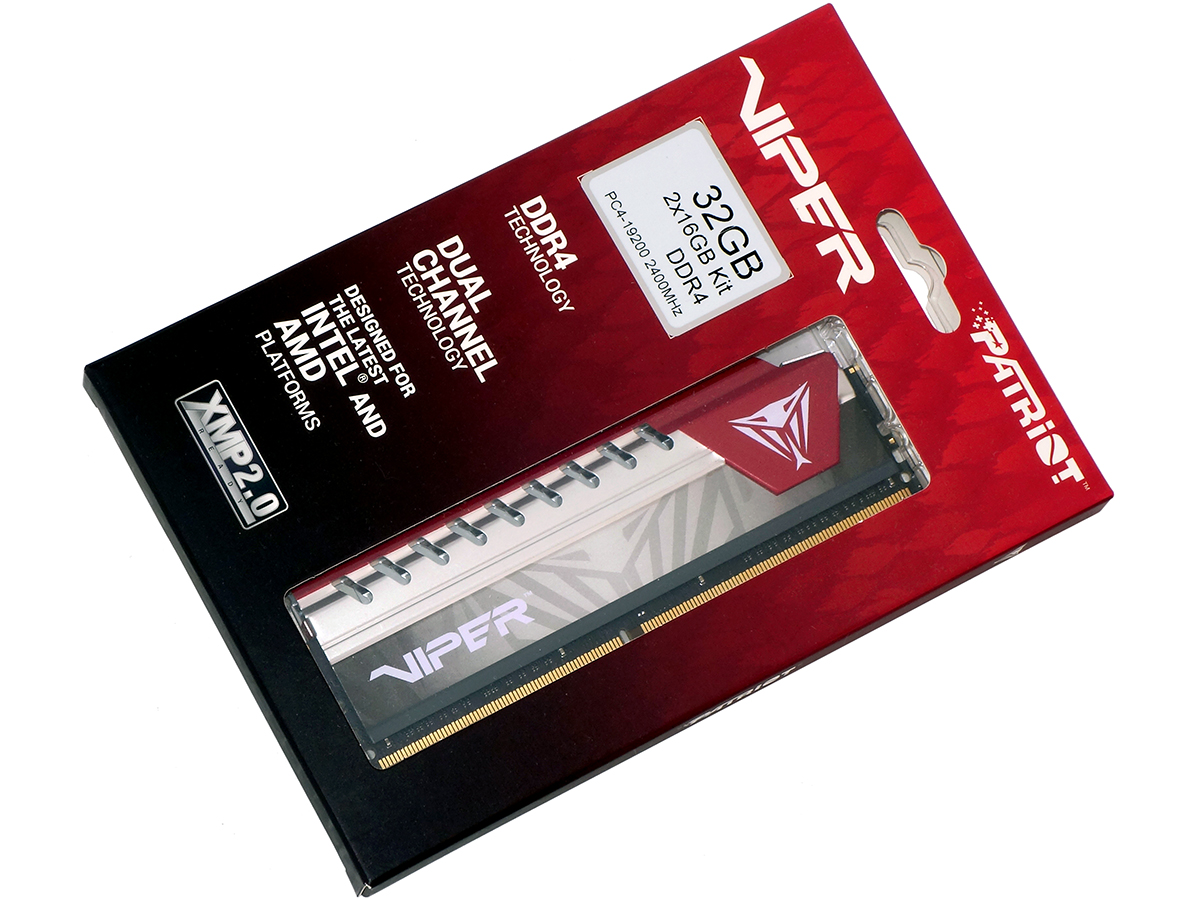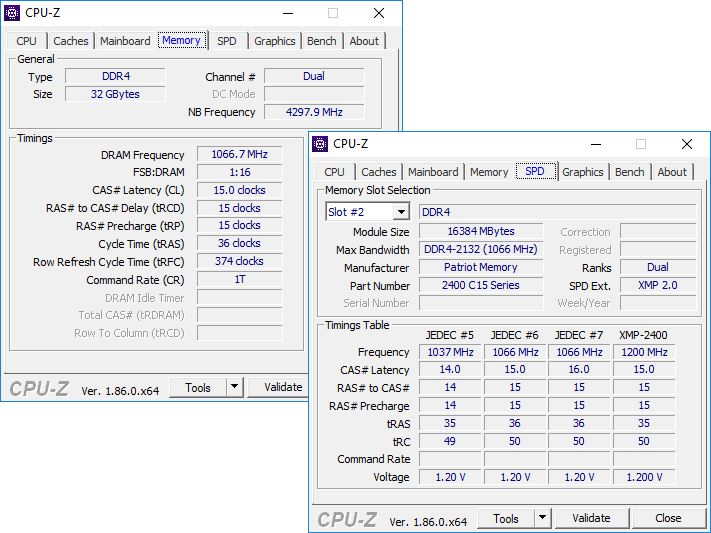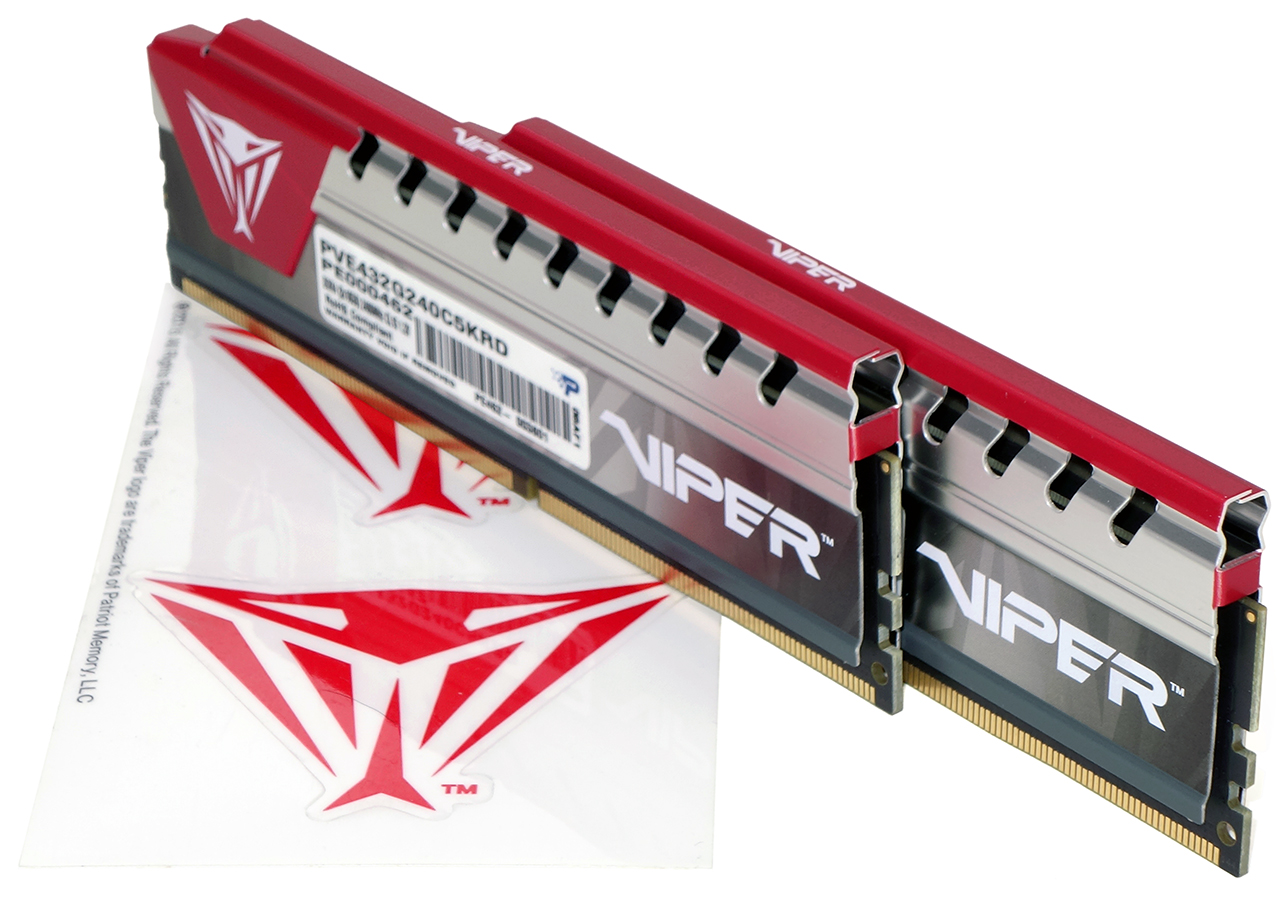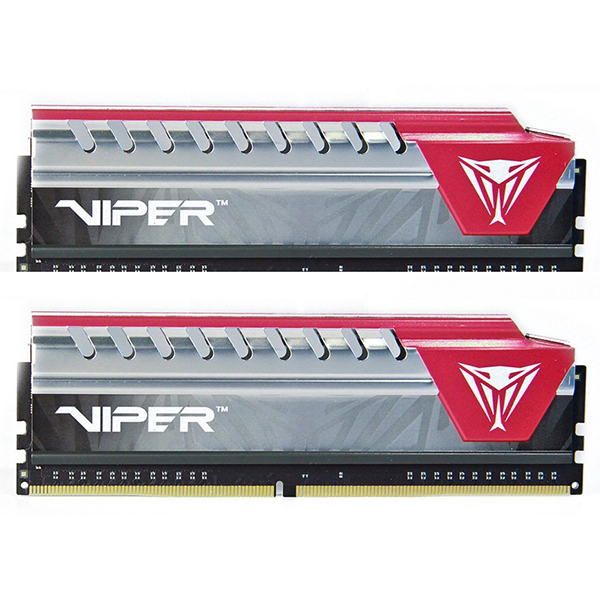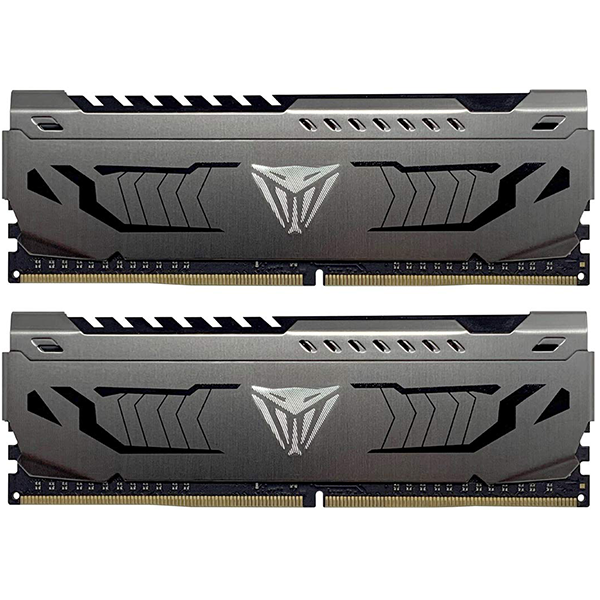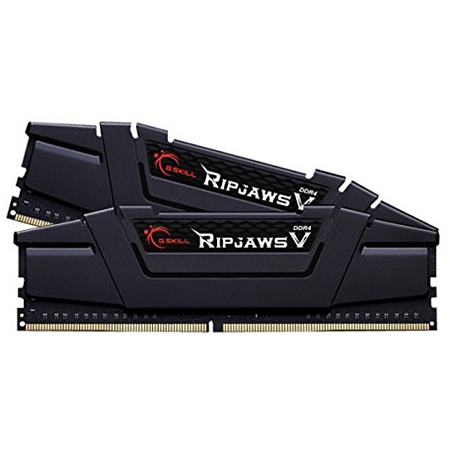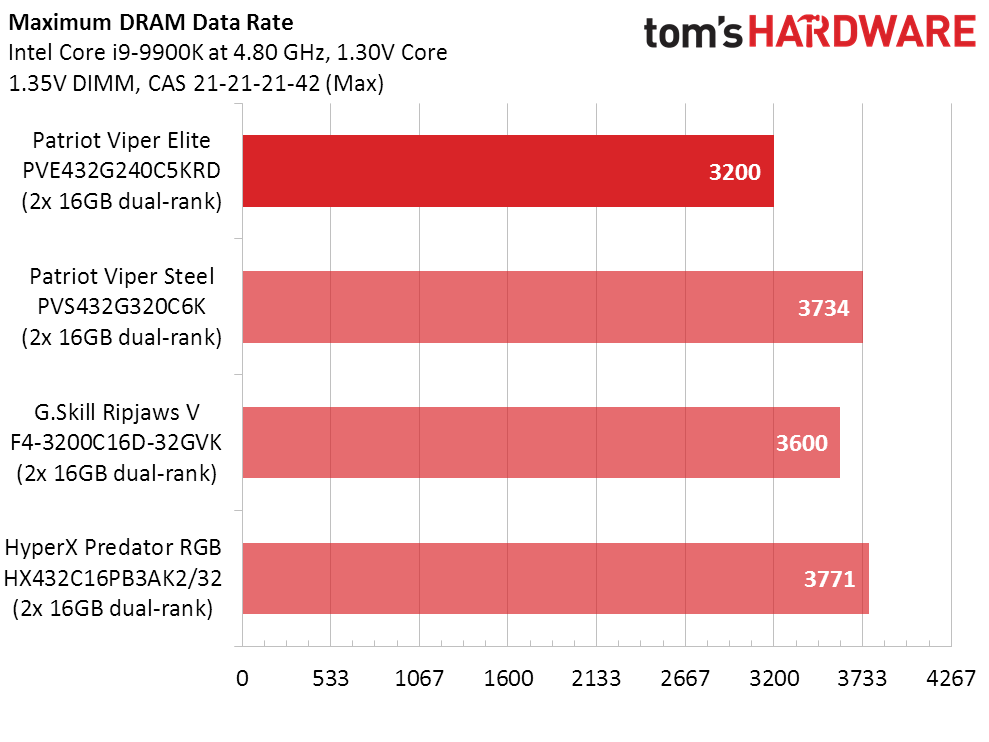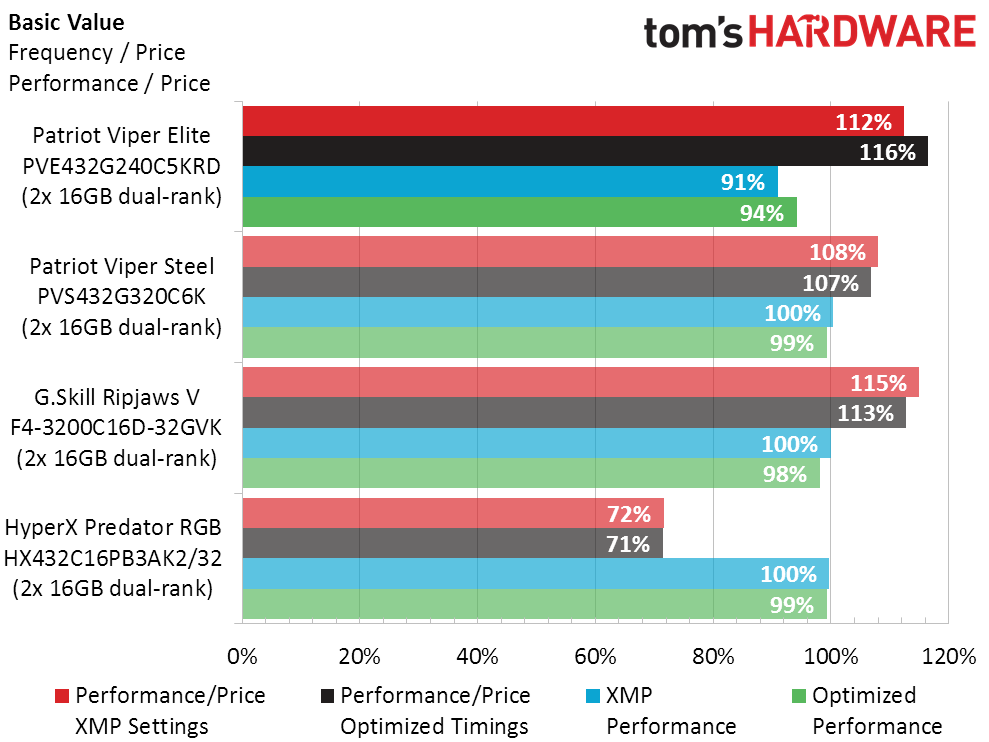Tom's Hardware Verdict
Competing against dozens of similarly-rated kits for a similar price, the aesthetics of Patriot’s Viper Elite DDR4-2400 CAS 15 becomes the primary reason for buyers to chose it. Anyone who can use a higher-speed kit should probably spend a few dollars more for one of those options instead.
Pros
- +
Good Looks
- +
Stock DDR4 Voltage (1.20V)
- +
Respected brand name
Cons
- -
Ordinary DDR4-2400 CAS 15 performance
- -
Setting DDR4-2400 requires XMP
Why you can trust Tom's Hardware
Patriot understands that value-seeking performance enthusiast often chose data-rate-limited CPUs such as the immensely-overclockable Core i3-8350K. While standard DDR4-2400 would probably do the trick for some of these builders, the ubiquity of glass-sided cases means that they’ll probably want something that at least looks better than stock. And hey, while you're adding some pretty heatsinks, why not bump the timings up a notch, too?
The greatest limitation of Patriot's part number PVE432G240C5KRD is probably that the company bumped the timings up by only one notch, from the currently-common CAS 16 to a mere CAS 15. Although standardized “DDR4-2400P” modules are also available at CAS 15, the organization that sets these standards has listed support for this as optional. Patriot thus chose to broaden compatibility with XMP-enabled motherboards that may not include a DDR4-2400P configuration by including it in an XMP profile. But the company chose not to include those same settings within the memory’s standard configuration table.
As a result, the only way to get these modules automatically configured at their rated DDR4-2400 is to put them in a board that supports XMP mode, and then enable the XMP setting. Not doing this results in the modules defaulting to a mere DDR4-2133. This, despite the module’s low XMP voltage and mediocre timings.
We define low-latency memory as having less than one cycle of latency for every 200 MHz of data rate, and that means CAS 12 would have been needed to even put them on our performance threshold. Elite thus refers to the module’s appearance, as these settings fit within what we’d define as standard replacement memory. Then again, perhaps we can push them a little farther?
Comparison Hardware
Though we’re generally recommending 32GB of installed capacity to all heavy multitaskers (especially after recent price drops), we’ve recently tested only a handful of 2x 16GB configurations, and some of those were DDR4-3600. The lowest data rate of our test group was DDR4-3200, so this is the only speed which we can compare. Fortunately for value seekers, the Viper Elite DDR4-2400 kit is cheap enough ($129/£106) that we expect it to strike hard in our price-to-performance comparison.
Comparison kits include Patriot’s own Viper Steel DDR4-3200 C16, G.Skill’s Ripjaws V DDR4-3200 C16, and HyperX Predator RGB DDR4-3200 C16. Configured to reduce non-DRAM bottlenecks, support hardware includes Asus’ Maximus XI Hero, Toshiba’s OCZ RD400 NVMe SSD, MSI’s GTX 1080 Armor OC, and Intel’s Core i9-9900K processor at a fixed 4.80 GHz frequency using Fractal Design’s Celsius S24 to keep it cool.
Overclocking and Latency Tuning
The Viper Elite DDR4-2400 proves itself an overclocking exception rather than an exceptional overclocker, as it's been over a year since we’ve tested a kit that couldn’t reach DDR4-3466. Then again, it’s been even longer since we tested a kit that was rated at only DDR4-2400.
Get Tom's Hardware's best news and in-depth reviews, straight to your inbox.
| Lowest Stable Timings at 1.35V (Max) on ROG Maximus XI Hero (BIOS 0805) | |||
| DDR4-3466 | DDR4-2933 | DDR4-2400 | |
| Patriot Viper ElitePVE432G240C5KRD(2x 16GB dual-rank) | ✗ | 15-17-17-34 (2T) | 12-14-14-28 (1T) |
| Patriot Viper SteelPVS432G320C6K(2x 16GB dual-rank) | 16-18-18-36 (2T) | 13-16-16-32 (1T) | 11-13-13-28 (1T) |
| G.Skill Ripjaws VF4-3200C16D-32GVK(2x 16GB single-rank) | 17-19-19-38 (2T) | 14-16-16-35 (2T) | 11-13-13-28 (1T) |
| HyperX Predator RGBHX432C16PB3AK2/32(2x 16GB single-rank) | 16-18-18-36 (2T) | 13-15-15-30 (1T) | 11-13-13-28 (1T) |
And now for the good news: Even though the Viper Elite DDR4-2400 wasn’t rated at a performance-enhancing CAS 12, we did get it to go that low with a little tweaking. This took many hours to figure out due to random crashes at similar timings. We ended up lowering the overclocking voltage from our 1.35V default to 1.325V in order to prevent this.
Benchmark Results

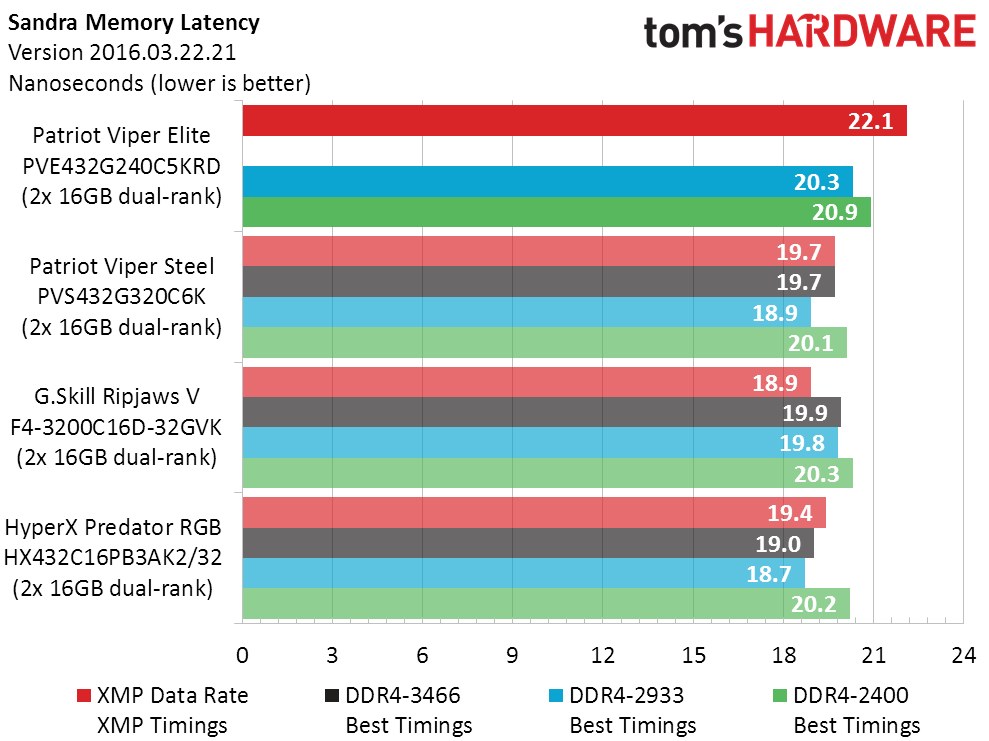
Sandra Bandwidth for the DDR4-2400 kit’s XMP settings wasn’t impressive, but the Patriot kit fared passably when manually tuned to tighter timings. It’s a shame that most users won’t configure their own timings, as most DDR4-2400 CAS 12 kits have reached EOL (end of life) production status.
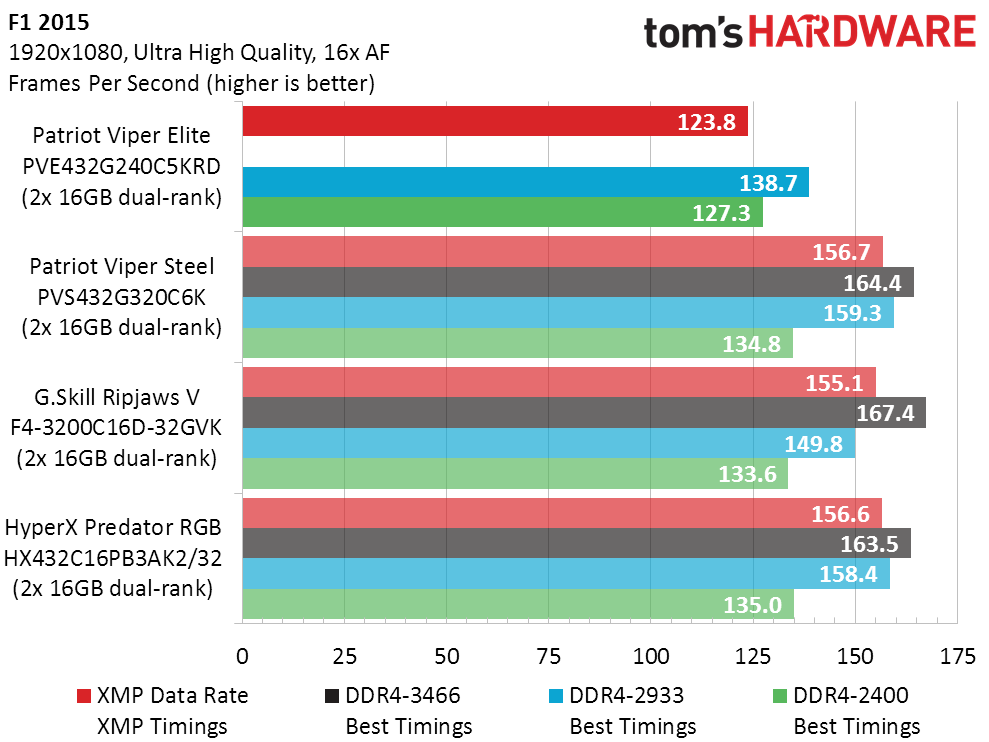
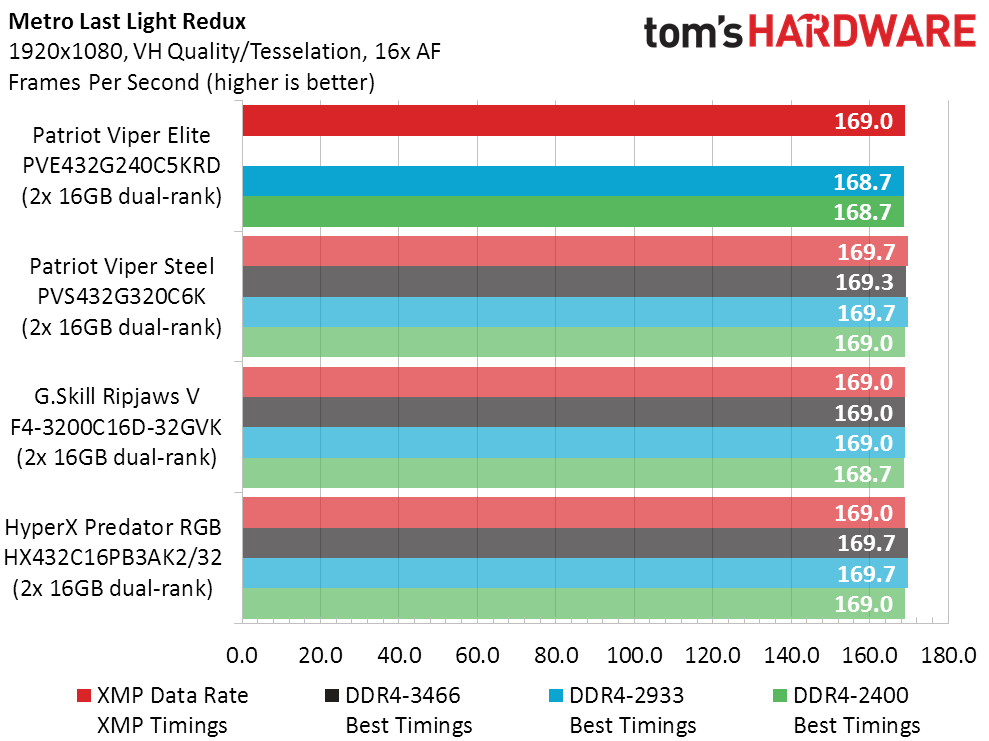
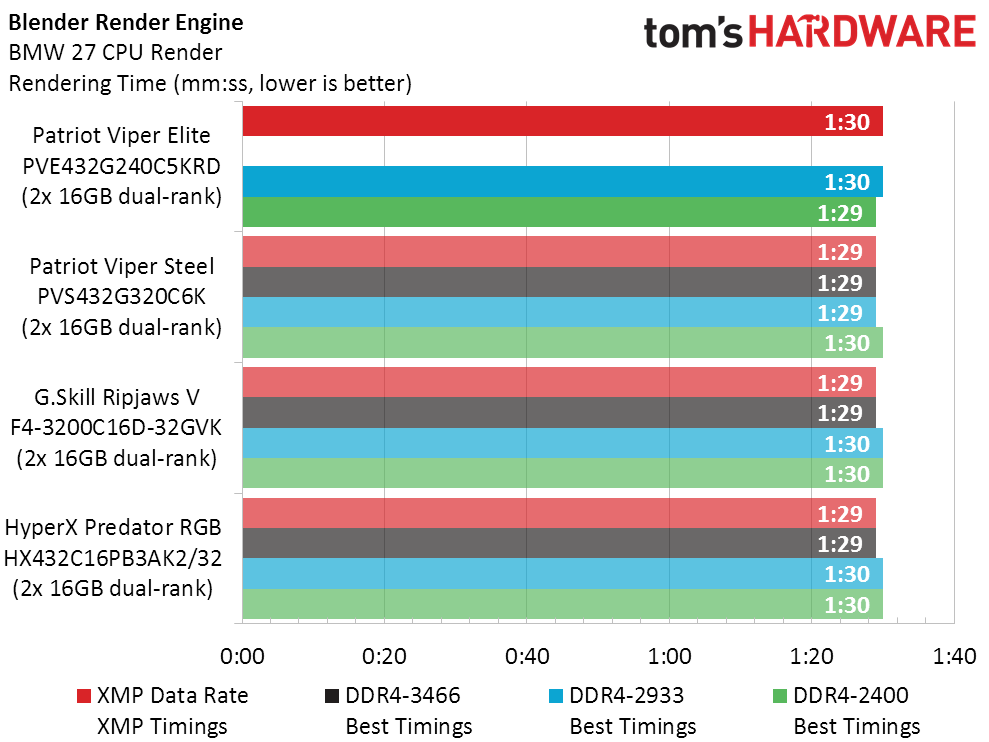
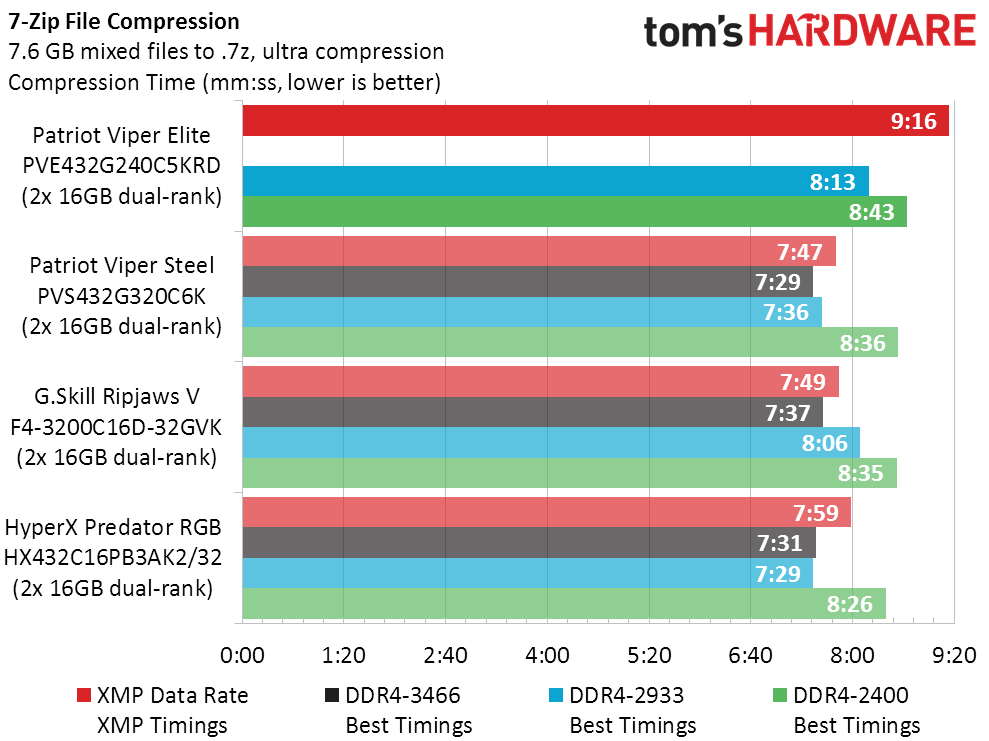
The performance story doesn’t look much better in F1 2015 or 7.Zip file compression, though the DDR4-2400 kit will at least benefit from our inclusion of normalizing benchmarks--Metro Last Light and Blender CPU Render--in the overall performance profile used for our value analysis.
Final Analysis
Reduced price and increased compatibility are the best reasons to buy DDR4-2400. But just pushing this data rate to mediocre performance levels requires lower latencies than this kit offers. The strongest argument in the Viper Elite’s favor is probably that nearly every other current DDR4-2400 kit has similarly bad rated timings. Our value chart hammers the point home, with a DDR4-3200 kit winning the value race despite its higher price.
The fact that most performance enthusiasts put their overclocking efforts into CPU overclocks while ignoring the potential benefit of manually configuring their memory means that we can’t make a broad recommendation. Those few who don’t mind searching for an old-stock DDR4-2400 C12 kit are welcomed to do so, but the majority of DDR4-2400 buyers will instead be given a choice of various kits with CAS 15, 16, or 17 timings. Eliminating the C16 and C17 kits from consideration still leaves them over a dozen choices, and the best thing we can say for Patriot’s kit is that it at least looks better than most of those.
Photo Credits: Tom's Hardware
MORE: Best Memory
MORE: DDR DRAM FAQs And Troubleshooting Guide
MORE: All Memory Content
